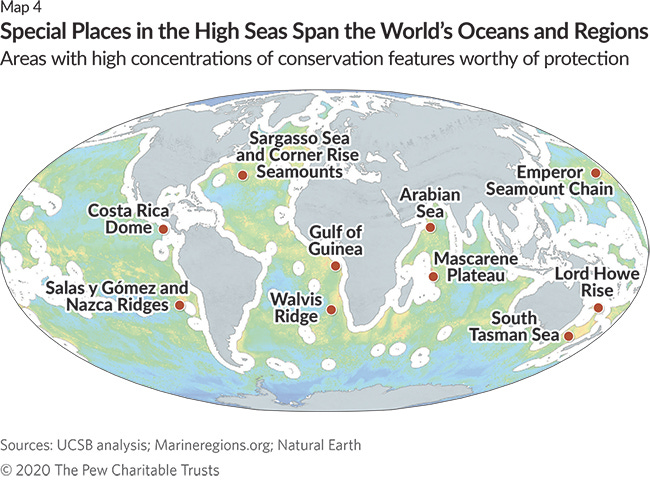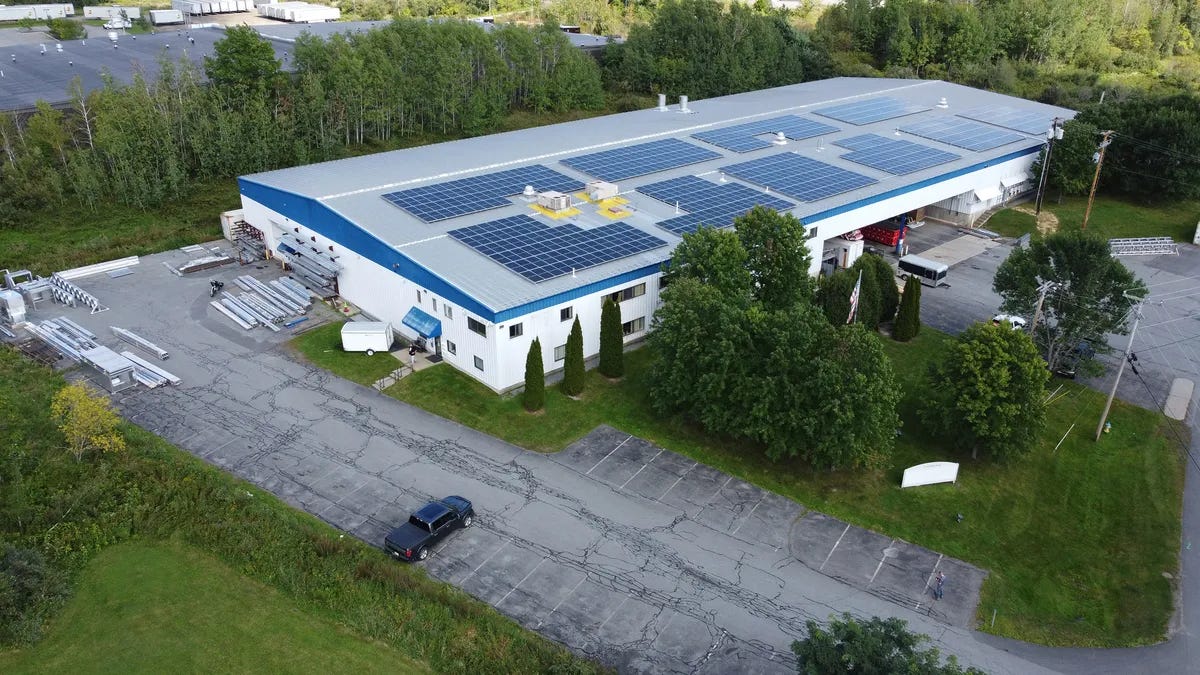The Weekly Anthropocene, March 8 2023
The High Seas Treaty, agricultural drones, solar peaker plants, sea level rise-predicting lichen, and more!
High Seas Treaty

On March 4, 2023, 193 nations (including the USA, EU, China, and many others) agreed on the language of United Nations High Seas Treaty, a truly epoch-making new legal framework for the protection of those parts of the world ocean outside any one country’s jurisdiction. This is a big deal, changing the legal status of an area that amounts to two-thirds of the ocean and 43% of all of Earth’s surface!)
The High Seas Treaty (here’s the full text) makes possible the creation of marine protected areas (MPAs) on the high seas for the first time in history, as well as establishing a framework for sharing marine genetic resources and a series of high seas-focused Conferences of the Parties (COPs) akin to the yearly climate and biodiversity COPs.
This new legal authority for nations to agree on creating high seas MPAs is transformative, moving the famed “30 by 30” goal of protecting 30% of Earth’s land and 30% of Earth’s oceans by 2030 (adopted in the Kunming-Montreal Global Biodiversity Framework of December 2022, as reported by this newsletter) from a powerful aspiration into a realistic possibility. The treaty now has to be formally adopted by the UN (a formality at this point, given that everyone’s already agreed on what gets adopted), and will enter into legal force once 60 countries ratify it1.
An array of particularly biodiverse locations, including the Arabian Sea, Gulf of Guinea, South Tasman Sea, and the Emperor Seamounts between Hawaii and Siberia, have already been proposed for the inaugural cohort of high seas MPAs. We’ll see more negotiations around this in upcoming years. Designation and full implementation of high seas MPAs will be a decades-long struggle given rampant and rapacious illegal, unreported and unregulated (IUU) fishing, but this treaty at long last provides the legal force to make protection even possible.
It went almost unnoticed amidst the crises of the moment, but March 2023 will go down in history as a watershed moment in international law, ocean conservation, and humanity’s relationship with the extraordinarily rich marine ecosystems that nurture most of the complex life on our planet. This is amazing news!
“We leave here with the ability to create protected areas in the high seas and achieve the ambitious goal of conserving 30% of the ocean by 2030. And the time to start is now.”
-Monica Medina, U.S. Assistant Secretary of State for Oceans and International Environmental and Scientific Affairs
Climate Tech
Agricultural drones are a rapidly growing industry, bringing substantial economic and environmental benefits. They can apply fertilizer or pesticides more cheaply and much more precisely than a tractor or a crop duster, reducing fertilizer waste. This sounds niche, but it’s a big deal: the production and use of common nitrogen fertilizers accounts for about 5% of global greenhouse gas emissions, and nitrogen fertilizer runoff often creates oxygen-depleted “dead zones” downstream and in the ocean. Plus, today’s agricultural drones are often electric, reducing emissions. They also don’t compact or erode soil tractors do, meaning they’re a better choice on muddy ground or after flooding. A climate win-win-win!
BloombergNEF’s latest Sustainable Energy in America Factbook report offers an in-depth review of clean energy progress in 2022. Some key takeaways (many of which we’ve already discussed in this newsletter):
Renewable energy (solar, wind and hydro) provided 23% of America’s electricity in 2022, up from 21% in 2021 and just 12% in 2011. Coal declined from 37% in 2011 to 19% in 2022!
Investment in the clean energy transition reached record highs in the US and around the world in 2022.
EV sales in the USA increased 50% year-on-year from 2021 to 2022, reaching 7% of new vehicle sales.
Grid-scale energy storage hit 4.8 gigawatts (1 GW=1,000 MW) in 2022, up from 3.7 GW in 2021.
And, of course, the Inflation Reduction Act passed, “hardwiring” renewables into the US economy for a decade to come! To take just one example of its immediate impact, $17 billion in new American battery manufacturing commitments were announced between the IRA passage in August 2022 and the end of the year.
New startup Keystone Tower Systems is working with the US Department of Energy to send out “mobile wind turbine factory trucks” across the US Southeast (in addition to their existing stationary factory), using innovative on-site spiral welding technology to build cheaper, taller wind turbines ideal for less windy parts of the country.
A new report from the Aberdeen Offshore Wind Farm in Scotland’s North Sea found that seabirds are much better at avoiding offshore wind turbines than previously thought, with radar and cameras repeatedly observing birds swerving to avoid wind turbine blades. Amazingly, not a single collision was observed over two years of monitoring! In the absence of evidence, the permitting process had previously erred on the side of caution and assumed that bird collisions with offshore wind turbines were high. This unprecedented evidence of extreme safety will hopefully translate into making it easier to permit new wind farms in the North Sea.
A new factory will bring 200 new manufacturing jobs making heat pump water heaters to Bangor, Maine thanks to a new $6 million investment from New York-based Aligned Climate Capital into Maine-based Nyle Systems. (Pictured: Nyle Systems’ existing factory in Bangor). This writer’s home state is starting to see the benefits of the Biden Era of domestic green manufacturing!
The Economist reports that the Biden Administration is committed to helping specific large-scale renewables projects overcome key bottlenecks like grid interconnection queues, permitting issues, and labor shortages. Energy Secretary Jennifer Granholm and Inflation Reduction Act czar John Podesta are leading this unprecedented level of Cabinet-level focus on project management.
Relatedly, an array of long-delayed power transmission line projects (vital for the clean energy transition, as they bring renewable electricity from distant solar or wind farms to population centers) are moving forward, after years of struggling with NIMBYism! Great news.
And Vikings Energy Farm just broke ground in Holtville, California, near the Mexican border. It’s set to combine 137 megawatts (MW) of solar power with 150 MW of battery storage. Solar and battery storage projects are going up all over America, but this one is particularly special: it’s among the first solar peaker plants. Peaker plants are power plants that release electricity to the grid only during periods of extra-high demand to prevent blackouts even during “peaks” in electricity use. Notably, this manifestly falsifies the longstanding anti-renewables argument that fossil fuel plants would always be needed as peaker plants, due to the variability of solar and wind generation. Turns out all we need is a little battery storage to stabilize things, and we're good to decarbonize the entire grid!
Lichens
A fascinating new study has found that lichens, the widespread algae/fungi symbiotic organisms that can take decades to grow, can serve as useful biological indicators for a site’s vulnerability (or lack thereof) to sea level rise. The presence of particular slow-growing, salt-sensitive lichen species can be a good indicator that a particular hyper-local site has remained free of saltwater for decades. For example, Leptogium cyanescens, the ruffled blue jellyskin lichen (present across America’s Eastern Seaboard) is a good sign that a site has not experienced even a single storm surge event that would have killed off sensitive lichen, and thus is somewhat less at risk when it comes to future sea level rise. Conversely, the presence of highly salt-tolerant lichen species indicates that this site has likely been flooded by saltwater sometime in the last few decades (which would have helped the salt-tolerant species outcompete other lichen), and thus may be at higher risk during sea level rise-driven storm surge in the future, even if it seems perfectly dry today.
Ratifying a treaty often takes a bit more work than signing a treaty, particularly in the United States. The USA has signed but not ratified a whole bunch of treaties, because the President can sign treaties but two-thirds of the Senate has to agree to ratify them under the US Constitution’s Treaty Clause. As that’s a high bar in modern polarized politics, the Senate has very rarely ratified treaties in recent decades, with the Kigali Amendment being a much-welcomed exception (as reported in this newsletter). It’s probable that the High Seas Treaty will go into effect shortly, the Senate will not muster a two-thirds majority to ratify it, but the United States will abide by its provisions anyway.









Very good news across the board Sam! I don't know any other substacks that show the rapid response of humanity, both govts and private actors to mitigate the effects of climate change. You must have put a lot of research into this and it shows. Thank you!